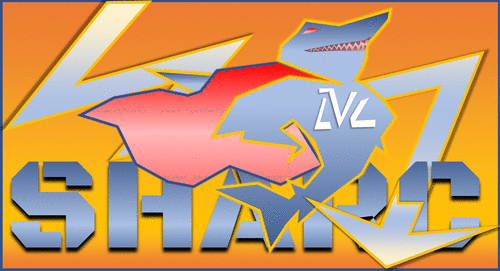当前位置:
X-MOL 学术
›
Acc. Chem. Res.
›
论文详情
Our official English website, www.x-mol.net, welcomes your feedback! (Note: you will need to create a separate account there.)
Surface Hopping Dynamics on Vibronic Coupling Models
Accounts of Chemical Research ( IF 18.3 ) Pub Date : 2021-09-27 , DOI: 10.1021/acs.accounts.1c00485 J Patrick Zobel 1 , Moritz Heindl 1 , Felix Plasser 2 , Sebastian Mai 1 , Leticia González 1, 3
Accounts of Chemical Research ( IF 18.3 ) Pub Date : 2021-09-27 , DOI: 10.1021/acs.accounts.1c00485 J Patrick Zobel 1 , Moritz Heindl 1 , Felix Plasser 2 , Sebastian Mai 1 , Leticia González 1, 3
Affiliation

|
The simulation of photoinduced non-adiabatic dynamics is of great relevance in many scientific disciplines, ranging from physics and materials science to chemistry and biology. Upon light irradiation, different relaxation processes take place in which electronic and nuclear motion are intimately coupled. These are best described by the time-dependent molecular Schrödinger equation, but its solution poses fundamental practical challenges to contemporary theoretical chemistry. Two widely used and complementary approaches to this problem are multiconfigurational time-dependent Hartree (MCTDH) and trajectory surface hopping (SH). MCTDH is an accurate fully quantum-mechanical technique but often is feasible only in reduced dimensionality, in combination with approximate vibronic coupling (VC) Hamiltonians, or both (i.e., reduced-dimensional VC potentials). In contrast, SH is a quantum–classical technique that neglects most nuclear quantum effects but allows nuclear dynamics in full dimensionality by calculating potential energy surfaces on the fly. If nuclear quantum effects do not play a central role and a linear VC (LVC) Hamiltonian is appropriate—e.g., for stiff molecules that generally keep their conformation in the excited state—then it seems advantageous to combine the efficient LVC and SH techniques. In this Account, we describe how surface hopping based on an LVC Hamiltonian (SH/LVC)—as recently implemented in the SHARC surface hopping package—can provide an economical and automated approach to simulate non-adiabatic dynamics. First, we illustrate the potential of SH/LVC in a number of showcases, including intersystem crossing in SO2, intra-Rydberg dynamics in acetone, and several photophysical studies on large transition-metal complexes, which would be much more demanding or impossible to perform with other methods. While all of the applications provide very useful insights into light-induced phenomena, they also hint at difficulties faced by the SH/LVC methodology that need to be addressed in the future. Second, we contend that the SH/LVC approach can be useful to benchmark SH itself. By the use of the same (LVC) potentials as MCTDH calculations have employed for decades and by relying on the efficiency of SH/LVC, it is possible to directly compare multiple SH test calculations with a MCTDH reference and ponder the accuracy of various correction algorithms behind the SH methodology, such as decoherence corrections or momentum rescaling schemes. Third, we demonstrate how the efficiency of SH/LVC can also be exploited to identify essential nuclear and electronic degrees of freedom to be employed in more accurate MCTDH calculations. Lastly, we show that SH/LVC is able to advance the development of SH protocols that can describe nuclear dynamics including explicit laser fields—a very challenging endeavor for trajectory-based schemes. To end, this Account compiles the typical costs of contemporary SH simulations, evidencing the great advantages of using parametrized potentials. The LVC model is a sleeping beauty that, kissed by SH, is fueling the field of excited-state molecular dynamics. We hope that this Account will stimulate future research in this direction, leveraging the advantages of the SH/VC schemes to larger extents and extending their applicability to uncharted territories.
中文翻译:

振动耦合模型的表面跳跃动力学
光致非绝热动力学的模拟在许多科学学科中具有重要意义,从物理学和材料科学到化学和生物学。在光照射下,会发生不同的弛豫过程,其中电子和核运动密切耦合。这些最好用时间相关的分子薛定谔方程来描述,但它的解决方案对当代理论化学提出了根本的实际挑战。解决这个问题的两种广泛使用和互补的方法是多配置时间相关 Hartree (MCTDH) 和轨迹表面跳跃 (SH)。MCTDH 是一种精确的全量子力学技术,但通常只有在降维、结合近似振动耦合 (VC) 哈密顿量或两者结合时才可行(即,降维 VC 电位)。相比之下,SH 是一种量子经典技术,它忽略了大多数核量子效应,但允许通过动态计算势能面来实现全维度的核动力学。如果核量子效应不发挥核心作用并且线性 VC (LVC) 哈密顿量是合适的——例如,对于通常将其构象保持在激发态的刚性分子——那么结合高效的 LVC 和 SH 技术似乎是有利的。在这个帐户中,我们描述了基于 LVC 哈密顿量 (SH/LVC) 的表面跳跃(最近在 SHARC 表面跳跃包中实现)如何提供一种经济且自动化的方法来模拟非绝热动力学。首先,我们在许多展示中说明了 SH/LVC 的潜力,包括 SO 中的系统间交叉 SH 是一种量子经典技术,它忽略了大多数核量子效应,但允许通过动态计算势能面来实现全维度的核动力学。如果核量子效应不发挥核心作用并且线性 VC (LVC) 哈密顿量是合适的——例如,对于通常将其构象保持在激发态的刚性分子——那么结合高效的 LVC 和 SH 技术似乎是有利的。在这个帐户中,我们描述了基于 LVC 哈密顿量 (SH/LVC) 的表面跳跃(最近在 SHARC 表面跳跃包中实现)如何提供一种经济且自动化的方法来模拟非绝热动力学。首先,我们在许多展示中说明了 SH/LVC 的潜力,包括 SO 中的系统间交叉 SH 是一种量子经典技术,它忽略了大多数核量子效应,但允许通过动态计算势能面来实现全维度的核动力学。如果核量子效应不发挥核心作用并且线性 VC (LVC) 哈密顿量是合适的——例如,对于通常将其构象保持在激发态的刚性分子——那么结合高效的 LVC 和 SH 技术似乎是有利的。在这个帐户中,我们描述了基于 LVC 哈密顿量 (SH/LVC) 的表面跳跃(最近在 SHARC 表面跳跃包中实现)如何提供一种经济且自动化的方法来模拟非绝热动力学。首先,我们在许多展示中说明了 SH/LVC 的潜力,包括 SO 中的系统间交叉 如果核量子效应不发挥核心作用并且线性 VC (LVC) 哈密顿量是合适的——例如,对于通常将其构象保持在激发态的刚性分子——那么结合高效的 LVC 和 SH 技术似乎是有利的。在这个帐户中,我们描述了基于 LVC 哈密顿量 (SH/LVC) 的表面跳跃(最近在 SHARC 表面跳跃包中实现)如何提供一种经济且自动化的方法来模拟非绝热动力学。首先,我们在许多展示中说明了 SH/LVC 的潜力,包括 SO 中的系统间交叉 如果核量子效应不发挥核心作用并且线性 VC (LVC) 哈密顿量是合适的——例如,对于通常将其构象保持在激发态的刚性分子——那么结合高效的 LVC 和 SH 技术似乎是有利的。在这个帐户中,我们描述了基于 LVC 哈密顿量 (SH/LVC) 的表面跳跃(最近在 SHARC 表面跳跃包中实现)如何提供一种经济且自动化的方法来模拟非绝热动力学。首先,我们在许多展示中说明了 SH/LVC 的潜力,包括 SO 中的系统间交叉 我们描述了基于 LVC 哈密顿量 (SH/LVC) 的表面跳跃(最近在 SHARC 表面跳跃包中实现)如何提供一种经济且自动化的方法来模拟非绝热动力学。首先,我们在许多展示中说明了 SH/LVC 的潜力,包括 SO 中的系统间交叉 我们描述了基于 LVC 哈密顿量 (SH/LVC) 的表面跳跃(最近在 SHARC 表面跳跃包中实现)如何提供一种经济且自动化的方法来模拟非绝热动力学。首先,我们在许多展示中说明了 SH/LVC 的潜力,包括 SO 中的系统间交叉2,丙酮中的里德堡内动力学,以及对大型过渡金属配合物的几项光物理研究,这些研究对于其他方法来说要求更高或不可能进行。虽然所有应用都提供了对光诱导现象非常有用的见解,但它们也暗示了 SH/LVC 方法面临的困难,需要在未来解决。其次,我们认为 SH/LVC 方法可用于对 SH 本身进行基准测试。通过使用与 MCTDH 计算几十年来相同的 (LVC) 电位,并依靠 SH/LVC 的效率,可以直接将多个 SH 测试计算与 MCTDH 参考进行比较,并考虑各种校正算法的准确性SH 方法的背后,例如退相干校正或动量重新缩放方案。第三,我们展示了如何利用 SH/LVC 的效率来确定在更准确的 MCTDH 计算中使用的基本核和电子自由度。最后,我们表明 SH/LVC 能够促进 SH 协议的发展,这些协议可以描述包括显式激光场在内的核动力学——对于基于轨迹的方案来说,这是一项非常具有挑战性的努力。最后,本帐户汇总了当代 SH 模拟的典型成本,证明了使用参数化势的巨大优势。LVC 模型是一个睡美人,被 SH 亲吻,正在推动激发态分子动力学领域。我们希望这个帐户将刺激未来在这个方向上的研究,在更大程度上利用 SH/VC 计划的优势,并将其适用性扩展到未知领域。
更新日期:2021-10-19
中文翻译:

振动耦合模型的表面跳跃动力学
光致非绝热动力学的模拟在许多科学学科中具有重要意义,从物理学和材料科学到化学和生物学。在光照射下,会发生不同的弛豫过程,其中电子和核运动密切耦合。这些最好用时间相关的分子薛定谔方程来描述,但它的解决方案对当代理论化学提出了根本的实际挑战。解决这个问题的两种广泛使用和互补的方法是多配置时间相关 Hartree (MCTDH) 和轨迹表面跳跃 (SH)。MCTDH 是一种精确的全量子力学技术,但通常只有在降维、结合近似振动耦合 (VC) 哈密顿量或两者结合时才可行(即,降维 VC 电位)。相比之下,SH 是一种量子经典技术,它忽略了大多数核量子效应,但允许通过动态计算势能面来实现全维度的核动力学。如果核量子效应不发挥核心作用并且线性 VC (LVC) 哈密顿量是合适的——例如,对于通常将其构象保持在激发态的刚性分子——那么结合高效的 LVC 和 SH 技术似乎是有利的。在这个帐户中,我们描述了基于 LVC 哈密顿量 (SH/LVC) 的表面跳跃(最近在 SHARC 表面跳跃包中实现)如何提供一种经济且自动化的方法来模拟非绝热动力学。首先,我们在许多展示中说明了 SH/LVC 的潜力,包括 SO 中的系统间交叉 SH 是一种量子经典技术,它忽略了大多数核量子效应,但允许通过动态计算势能面来实现全维度的核动力学。如果核量子效应不发挥核心作用并且线性 VC (LVC) 哈密顿量是合适的——例如,对于通常将其构象保持在激发态的刚性分子——那么结合高效的 LVC 和 SH 技术似乎是有利的。在这个帐户中,我们描述了基于 LVC 哈密顿量 (SH/LVC) 的表面跳跃(最近在 SHARC 表面跳跃包中实现)如何提供一种经济且自动化的方法来模拟非绝热动力学。首先,我们在许多展示中说明了 SH/LVC 的潜力,包括 SO 中的系统间交叉 SH 是一种量子经典技术,它忽略了大多数核量子效应,但允许通过动态计算势能面来实现全维度的核动力学。如果核量子效应不发挥核心作用并且线性 VC (LVC) 哈密顿量是合适的——例如,对于通常将其构象保持在激发态的刚性分子——那么结合高效的 LVC 和 SH 技术似乎是有利的。在这个帐户中,我们描述了基于 LVC 哈密顿量 (SH/LVC) 的表面跳跃(最近在 SHARC 表面跳跃包中实现)如何提供一种经济且自动化的方法来模拟非绝热动力学。首先,我们在许多展示中说明了 SH/LVC 的潜力,包括 SO 中的系统间交叉 如果核量子效应不发挥核心作用并且线性 VC (LVC) 哈密顿量是合适的——例如,对于通常将其构象保持在激发态的刚性分子——那么结合高效的 LVC 和 SH 技术似乎是有利的。在这个帐户中,我们描述了基于 LVC 哈密顿量 (SH/LVC) 的表面跳跃(最近在 SHARC 表面跳跃包中实现)如何提供一种经济且自动化的方法来模拟非绝热动力学。首先,我们在许多展示中说明了 SH/LVC 的潜力,包括 SO 中的系统间交叉 如果核量子效应不发挥核心作用并且线性 VC (LVC) 哈密顿量是合适的——例如,对于通常将其构象保持在激发态的刚性分子——那么结合高效的 LVC 和 SH 技术似乎是有利的。在这个帐户中,我们描述了基于 LVC 哈密顿量 (SH/LVC) 的表面跳跃(最近在 SHARC 表面跳跃包中实现)如何提供一种经济且自动化的方法来模拟非绝热动力学。首先,我们在许多展示中说明了 SH/LVC 的潜力,包括 SO 中的系统间交叉 我们描述了基于 LVC 哈密顿量 (SH/LVC) 的表面跳跃(最近在 SHARC 表面跳跃包中实现)如何提供一种经济且自动化的方法来模拟非绝热动力学。首先,我们在许多展示中说明了 SH/LVC 的潜力,包括 SO 中的系统间交叉 我们描述了基于 LVC 哈密顿量 (SH/LVC) 的表面跳跃(最近在 SHARC 表面跳跃包中实现)如何提供一种经济且自动化的方法来模拟非绝热动力学。首先,我们在许多展示中说明了 SH/LVC 的潜力,包括 SO 中的系统间交叉2,丙酮中的里德堡内动力学,以及对大型过渡金属配合物的几项光物理研究,这些研究对于其他方法来说要求更高或不可能进行。虽然所有应用都提供了对光诱导现象非常有用的见解,但它们也暗示了 SH/LVC 方法面临的困难,需要在未来解决。其次,我们认为 SH/LVC 方法可用于对 SH 本身进行基准测试。通过使用与 MCTDH 计算几十年来相同的 (LVC) 电位,并依靠 SH/LVC 的效率,可以直接将多个 SH 测试计算与 MCTDH 参考进行比较,并考虑各种校正算法的准确性SH 方法的背后,例如退相干校正或动量重新缩放方案。第三,我们展示了如何利用 SH/LVC 的效率来确定在更准确的 MCTDH 计算中使用的基本核和电子自由度。最后,我们表明 SH/LVC 能够促进 SH 协议的发展,这些协议可以描述包括显式激光场在内的核动力学——对于基于轨迹的方案来说,这是一项非常具有挑战性的努力。最后,本帐户汇总了当代 SH 模拟的典型成本,证明了使用参数化势的巨大优势。LVC 模型是一个睡美人,被 SH 亲吻,正在推动激发态分子动力学领域。我们希望这个帐户将刺激未来在这个方向上的研究,在更大程度上利用 SH/VC 计划的优势,并将其适用性扩展到未知领域。


























 京公网安备 11010802027423号
京公网安备 11010802027423号